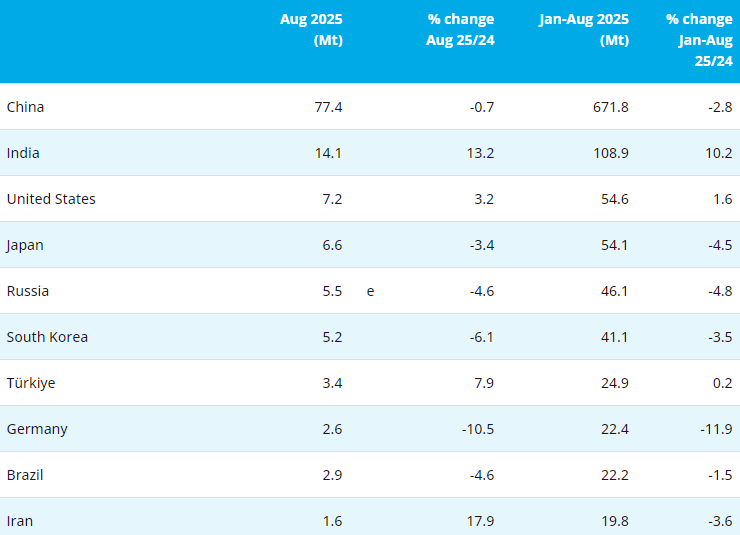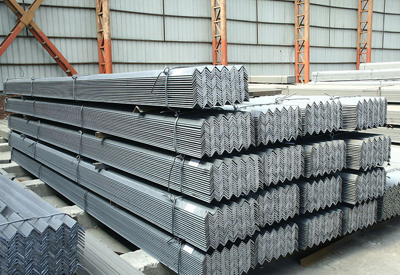[Ferro-Alloys.com] Transnet credit rating slashed as cash burn continues‘
The inefficiencies have led to increased logistics costs, making South African goods less competitive’ – Munya Chawana, associate director, S&P Global Ratings.
JIMMY MOYAHA: Ratings agency Standard & Poor’s has put out a comment around the parastatal that is known as Transnet. The ratings agency suggests that the rail group is likely to miss its volume targets that are set for 2030 but, more importantly, they’re likely to be burning through cash at least until 2028.
To take a look at this I’m joined on the line by associate director at S&P Global Ratings Munya Chawana. Munya, good evening. Thanks so much for taking the time.
Let’s perhaps start with an overview of some of the insights and assumptions that you factored in as S&P when looking at Transnet and understanding the dynamics of the way Transnet is currently set up.
MUNYA CHAWANA: Thank you so much. I think in our report we detail in terms of our base case, which is underpinned by improving Transnet Freight Rail volumes – particularly if you look at the volumes that were being railed from pre-2023 sort of going to 2024.
So in terms of our base case, we actually see revenues increasing to about R88 billion by 2026. And that compares to about R77 billion in 2024. But, having said that, we acknowledge that Transnet has a high fixed-cost base which actually results in less than optimal cash-flow generation.
So in terms of our numbers we are looking at R11-12 billion in terms of cash flow from operations.
But at the same time Transnet now has higher capital expenditure requirements over the next five years – about R127 billion. And if we look sort of for 2025 to 2027, Transnet is budgeting to spend about R25 billion annually.
So to bring it back, if the company is generating R11-12 billion and it has capital expenditure requirements of about R25 billion, then it sort of gives you an idea in terms of the gap that we see in terms of the cash flow from operations versus the capital requirements.
And just for context, the R25 billion that we see annually actually compares to R12 billion to R14 billion in 2023, in 2024. So there is a substantial increase in the capital expenditure requirement. Yet at the same time the pace of revenue and cash-flow generation is not at par with that capex requirement.
JIMMY MOYAHA: So the capital structure of the business is currently of concern to the team at S&P from a ratings perspective.
The other side of it that was mentioned was of course that the parastatal, in the form of Transnet, would require extraordinary support from government in order for it to meet its current objectives – or at least to stay on par with what it has projected at the moment. We’ve already seen that the state has offered guarantees which have seemingly stabilised [how] Transnet is perceived in the capital markets.
But when you mention ‘extraordinary support’ from government, are we talking about more guarantees, more bailouts?
How are you seeing this extraordinary support playing out?
MUNYA CHAWANA: Maybe a quick starting point. In terms of ‘extraordinary support’ we define that as occurring in periods where a state-owned entity is actually in stress. So in the case of Transnet, we’ve seen issues related to liquidity as well as some of the issues related to debt refinancing.
Read: Transnet is running out of cash, Moody’s warns
I think in terms of the government support, what we have seen, particularly in 2024, the government [made] R47 billion [available] in guarantees. And then just recently the government [provided] about R51 billion in support for Transnet in terms of government guarantees as well. That is split between R41 billion for funding requirements and R10 billion for liquidity.
I think the most important sort of point that we highlight is that, given the negative free operating cash flow that Transnet will be generating, they won’t be able to service all their debt obligations on a standalone basis so essentially there is a high dependence on government support.
What we understand is that there is about R99 billion in debt maturities over the next five years for Transnet, and the expectation is that that will be provided by government in terms of government guarantees.
On the other hand, we’ve also seen some support coming in the form of the budget facility for infrastructure. We understand that about R35.4 billion in concessional funding will be [made available] to Transnet. But I think in terms of the overall support what we see is that support coming in the form of government guarantees.
JIMMY MOYAHA: Munya, when we take a look at the other factors, looking at Transnet, can we take a look at potential impacts of something like the US tariffs on the Transnet objectives, or at least on Transnet’s operations, understanding that of course Transnet is responsible for the bulk of the exports – if not almost all of the exports that are moved through the country to get to the port. The impact of US tariffs – is that something that’s been factored in at this stage?
MUNYA CHAWANA: Yes. We’ve had discussions on that. I think what you alluded to, particularly if you look at it from sort of the bulk commodities, a lot of that still goes to countries like China and India. So I think at this particular stage less of an impact from that perspective.
But obviously we are quite concerned if you look at it from the perspective of, let’s say, exports in terms of automobiles that come from South Africa. That could be significant.
Listen: Can SA’s automotive sector survive the Trump tariffs?
But I think the broader picture – given sort of the volumes and size that the commodities play in Transnet’s operational performance – is a bit muted at this stage. But obviously it’s still a fluid sort of picture that is a developing and we will be looking into that in the next few quarters.
JIMMY MOYAHA: Munya, speaking of the broader picture, when we look at Transnet and its impact on the South African economy this is obviously something you would then factor into forecasts around GDP growth and all of that. Where do you currently see the impact that Transnet is having on the South African economy, and how do you view the need for the sustainability of the infrastructure that sits within our logistics framework?
MUNYA CHAWANA: Yes, I think that’s a very good question. Obviously from where I sit we are on the corporate side and the GDP implications [are] actually sort of in the domain of our sovereign team. But I think what I can say is that it’s more or less related to that bulk commodities’ space or impact, particularly with concerns around how South Africa at times has missed some of the boom in commodities, not being able to get the commodities to the ports.
Obviously the inefficiencies as well have led to increased logistics costs, which by implication make South African goods less competitive.
So I think, all in all, that is the depiction in terms of the implications from a GDP perspective.
In terms of the overall sustainability of the industry, I think what we’ve seen – from a broader picture again – is some of the initiatives that the government has actually [come up with] in terms of opening up the space in rail and in ports as well, trying to increase private-sector participation.
Read: Creecy punts private sector investment for five rail and port corridors
But I think a key factor for the sustainability of the industry – be it from a rail perspective or even ports – relates to how much capital expenditure will be invested over the next five years, given the backlog in maintenance as well as some of the issues related to aging infrastructure.
JIMMY MOYAHA: Munya, would an improvement in the capital structure of Transnet improve the ratings view from S&P’s perspective? Was that the main reason why the parastatal was downgraded by Standard & Poor’s?
MUNYA CHAWANA: Yes, in terms of our reasons we highlighted that there is a negative free cash-flow generation.
Obviously as a standalone, Transnet is not able to lower that debt burden. So if there is a development in terms of better cash-flow generation that results in positive free operating cash flow, obviously there is a prospect of lowering the leverage. It’s something that we would view positively from a credit-rating perspective.
JIMMY MOYAHA: We’ll leave the conversation on that note. Thank you so much for those insights and for the time. Hopefully we can see the turnaround strategy that Transnet has been talking about continue to unfold and improve the business’s operations, but only time will tell.
That was Munya Chawana, who is associate director at S&P Global Ratings, on their decision to downgrade Transnet, some of the factors behind that, and perhaps how they’re viewing the parastatal.
- [Editor:tianyawei]



 Save
Save Print
Print Daily News
Daily News Research
Research Magazine
Magazine Company Database
Company Database Customized Database
Customized Database Conferences
Conferences Advertisement
Advertisement Trade
Trade






 Online inquiry
Online inquiry Contact
Contact

Tell Us What You Think